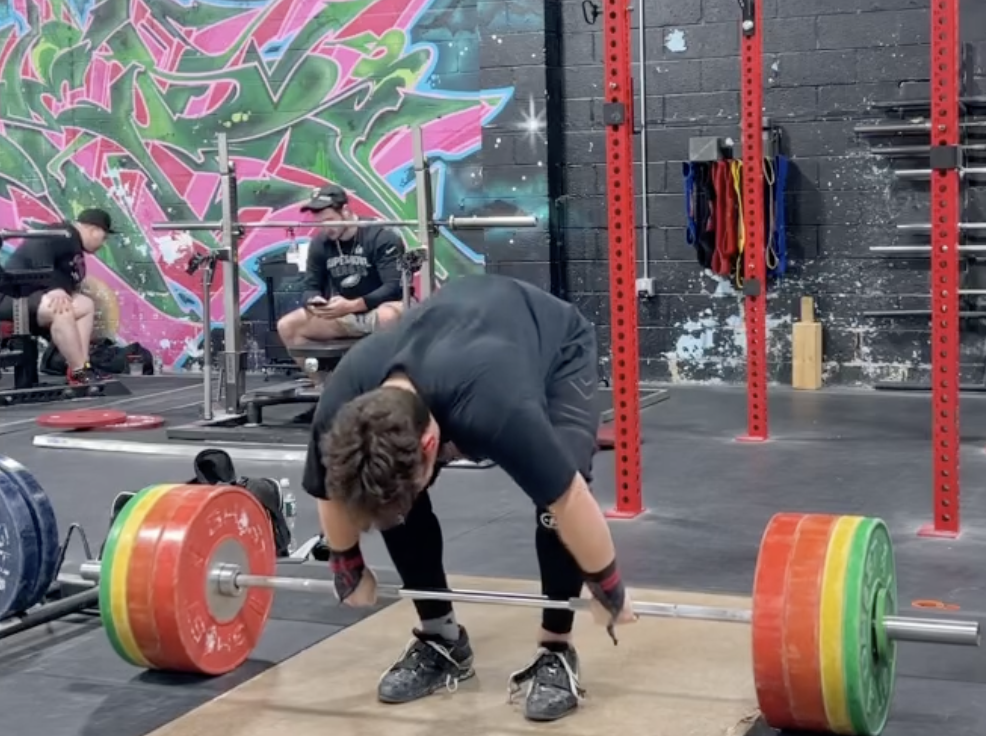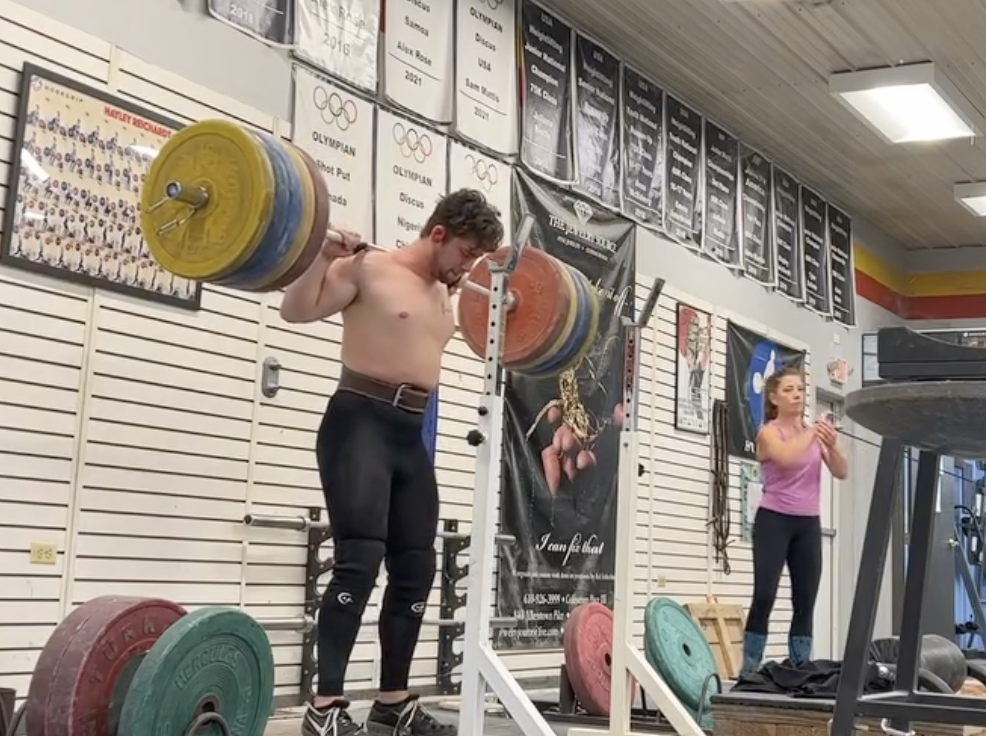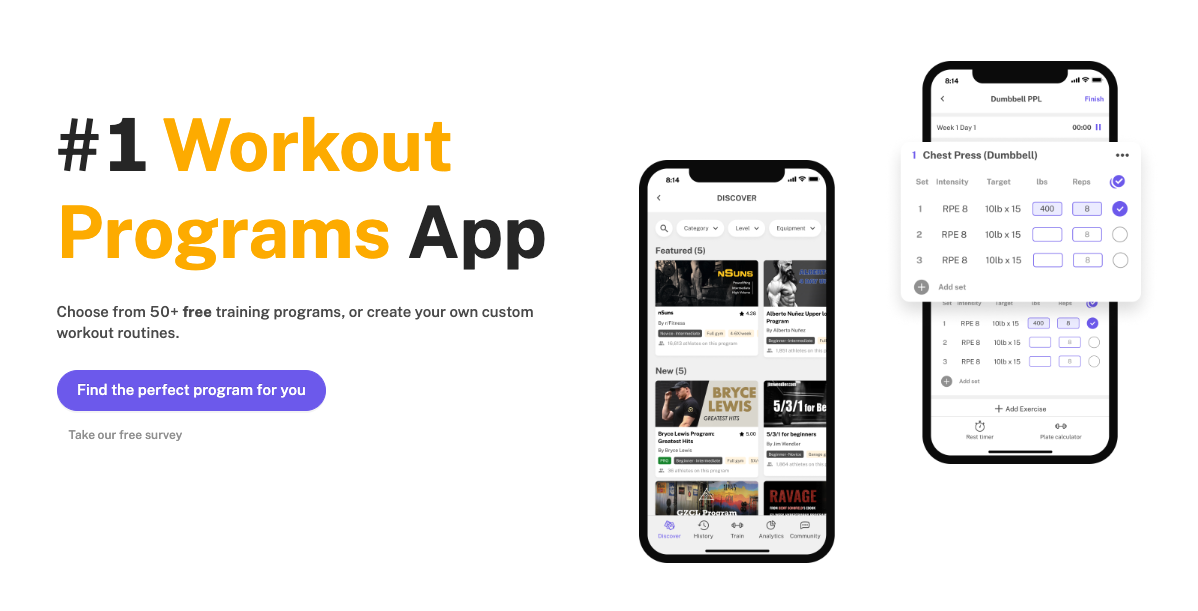RPE vs Percentage Training: Which is Better?
Written by The Boostcamp Editors
RPE vs Percentage Training: Which is the Superior Method?
Following a properly designed workout program is key to unlocking your full potential in the gym. RPE and % of 1RM are both common methods for measuring load intensity in powerlifting and bodybuilding programs. That's right, even bodybuilders like to test out how heavy they can go on those compound lifts every now and then, not just powerlifters. In this article, we will explore the differences between these two approaches, their pros and cons, and the reasons why you might choose one over the other.
Let's break it down!
RPE Based Programs

What is RPE?
RPE stands for Rate of Perceived Exertion, which is a subjective scale from 1 to 10 used to measure the intensity in a given set of an exercise. For weight training, the RPE scale is based on how many reps in reserve (reps left in the tank) before failure you have at the end of a set. RPE training, also known as the perceived exertion scale, allows for a more personalized and adaptable approach to training, making it a valuable tool for athletes and fitness enthusiasts alike.
RPE 10 means you cannot do another rep without failure at the end of the set. RPE 9 means you have 1 rep in reserve at the end of a set. For example, you could have done 1 more rep before reaching absolute failure. RPE 8 means you have 2 reps in reserve at the end of the set, RPE 7 with 3 reps in reserve, and so on and so forth.
Why use RPE in a training program?
RPE in a workout program provides an individualized approach to training intensity based on the lifter’s ability on a given training day. For example, an athlete’s performance to lift a certain weight or reps depends on factors like fatigue, stress, energy, and sleep quality. If a program prescribes a target intensity (RPE) on an exercise, it gives the trainees the flexibility to select a weight that is at the optimal level. This is called auto-regulation, and it is recommended by the CDC for a healthy lifestyle.
In a real world example in the gym, let’s say you are doing a program that calls for Bench Press, 3 sets of 10 reps at RPE 8. This means that you should find a weight that they can lift for 10 reps with 2 reps left in the tank. If you know that you can do 200 lbs for a 10 rep max (RPE 10), then you should probably choose a lower weight like 185 lbs so you can do it for 10 reps (at RPE 8 with 2 reps left in the tank). This method of selecting weights based on RPE allows for more variation and avoids the monotony of using the same percentages every training session, making it a useful tool for avoiding repetition in a training program.
Example of RPE in a workout program
3 weeks of RPE-based program:
Week 1: Bench Press 3 sets of 10 reps @ RPE 7
Week 2: Bench Press 3 sets of 10 reps @ RPE 8
Week 3: Bench Press 3 sets of 10 reps @ RPE 9
Week 4 (deload): Bench Press 3 sets of 10 reps @ RPE 5
Example above with weights used:
Week 1: Bench Press 3 sets of 10 reps @ 180 lbs
Week 2: Bench Press 3 sets of 10 reps @ 195 lbs
Week 3: Bench Press 3 sets of 10 reps @ 205 lbs
Week 4 (deload): Bench Press 3 sets of 10 reps @ 155 lbs
Pros of RPE-based Programs
Individualization: RPE allows for a personalized training experience based on an athlete’s perceived effort and current fitness levels.
Adaptability: RPE allows for adjustment on the fly, taking into account daily fluctuations in energy levels and other factors that may impact performance.
Autoregulation: RPE enables athletes to better listen to their bodies and reduce the risk of overtraining or injury.
Cons of RPE-based Programs
Subjectivity: Since RPE is based on personal perception, it may be less reliable and prone to inaccuracies.
Requires Experience: RPE is most effective when individuals have enough training experience to accurately gauge their own exertion levels.
Best programs with RPE-based progression (free)
Novice Bodybuilding Program: program from The Muscle and Strength Pyramid book
Intermediate Bodybuilding Program: also from The Muscle and Strength Pyramid book
Alberto Nunez Upper Lower Split: intermediate bodybuilding program by Mr. Universe
Rampage: 3x/week novice hypertrophy program by Geoff Verity Schofield
Ravage: 6x/week intermediate hypertrophy program by Geoff Verity Schofield
1RM Percentage-Based Programs

What is 1RM %-based programming?
Percentage-based training programs involve prescribing a specific % of an athlete’s one-rep max (1RM) for a given exercise. The calculation to determine the target weight is simple. For example, a workout program might prescribe the following targets: bench press for 3 sets of 8 reps at 70% of 1RM. This means that if your bench press 1RM is 200 lbs, you’ll do 140 lbs for 3 sets of 8 reps using the first set last approach. Some programs might also have target 1RM ranges, like 65%-70% of 1RM, to give the lifter more flexibility on what weight to use. Percentage based programming, which can also incorporate muscular failure, has been around for decades and is a tried and proven method for lifting programs.
Why use 1RM % targets in a program?
1RM % programming approach allows for more precise programming and periodization, with the intensity of the workout being determined by a predetermined percentage of the athlete's maximum strength. 1RM % programs are also easy to use as long as you know your 1RMs; just plug in your 1RM and all your weights are provided for every week.
Percentage-based programs like nSuns 531 are especially popular in powerlifting programs (1 step back, 2 steps forward) to get lifters stronger and peak for competition. This method is also used on some bodybuilding and powerbuilding programs to provide concrete weight numbers to target, as strength gains is also a strong barometer for hypertrophy.
Example of 1RM % program
3 week wave progression cycle example:
Week 1: 3 sets of 8 reps at 70% of 1RM
Week 2: 3 sets of 6 reps at 80% of 1RM
Week 3: 3 sets of 4 reps at 90% of 1RM
Week 4: Deload week or repeat the cycle with adjusted weights
Pros of Percentage Based Programs
Objectivity: Percentage-based programs offer a more objective approach to training, with intensity based on quantifiable metrics.
Consistency: This method provides a consistent framework for progression, allowing athletes to track improvements over time.
Structured Progression: Percentage-based training enables coaches and athletes to design structured, periodized programs that systematically target different aspects of strength development.
Cons of Percentage Based Programs
Rigidity: Percentage-based programs may not account for daily fluctuations in energy levels or other factors that impact performance.
Regular 1RM Testing: To maintain accuracy, regular 1RM testing is necessary, which may be time-consuming and disruptive to training.
Best Percentage Based Programs (Free)
Candito 6-Week Strength: Break PRs with this intense and fun 6-week powerlifting split
TSA Beginner Approach: powerlifting program made by champion Bryce Lewis
TSA Intermediate Approach: powerlifting program made by champion Bryce Lewis
5/3/1 for Beginners: Wendler’s famous 5/3/1 strength training philosophy for beginners
5/3/1 Boring But Big: Popular 5/3/1 variation to build strength and size for intermediates
Choosing the Right Approach: RPE vs. Percentage Based Programming
What’s better: RPE or Percentage based programs?
The choice between RPE and percentage-based training ultimately depends on individual needs, goals, and preferences. Here are some factors to consider when making your decision:
Experience Level: Less experienced lifters may benefit from percentage-based programs, as they provide structure and clear progression. More advanced lifters might prefer RPE for its adaptability and autoregulation capabilities.
Training Goals: Athletes focused on specific strength goals, like powerlifting or Olympic lifting, might benefit from percentage-based programs. Those with more bodybuilding hypertrophy or general fitness goals may find RPE more suitable.
Personal Preference: Some individuals prefer the structure and objectivity of percentage-based programs, while others thrive on the adaptability and intuitive nature of RPE-based training.
Programs with both RPE and % of 1RM progressions
Many excellent training programs utilize both RPE and 1RM % within the same workout, or even for the same exercise.
For example, in the free TSA Beginner Program by champion powerlifter Bryce Lewis, paused deadlifts in week 1 and day 2 are programmed as 3 sets of 4 reps at 65% of 1RM or RPE 6.5. This means that you can use the calculated weight of 65% of 1RM as a starting point, but if the warm-up sets feel extra light or extra heavy, you can increase or decrease the weight to hit RPE 6.5.
In another example, in the free Novice Bodybuilding Program by Dr. Eric Helms, the compound lifts have % of 1RM progressions, while the isolation accessories have RPE targets. This is a mixed approach that is very effective for managing intensity to ensure optimal progress.
Where to Find the Best Programs
When looking for a program to use while you are trying to incorporate RPE or percentage based workouts into your schedule, you can surely get a cookie cutter program off of the internet. However, you can choose from countless good programs available on Boostcamp to find or build your workout routine and help you make progress with your goals such as cutting or bulking or maingaining. A good program will keep you on track, making sure that you are making the most gains and maximizing your time in the gym. If you are looking to stay on track and continue with linear progression, then finding a good workout program is the key.
Boostcamp offers over 50 FREE workout programs that help with strength, hypertrophy, or functional fitness, or both, from the push pull legs program all the way to upper lower, there are so many programs to choose from that can help fit your needs. However, with Boostcamp, you don’t have to just follow a pre-written program (although each program is written by a professional), you also can create your own program as well, and track your progress to make sure you are on the right track. That being said, when you are looking to incorporate some serious training to further your progress with RPE and percentage based training, then check out Boostcamp.
Conclusion
Both RPE and percentage-based training programs are effective methods for lifters to build muscle and gain strength. Which tool you use depends on your experience level, training goals, and personal preference. Ultimately, it depends how these tools are utilized in a properly designed progression-based program with various training methods, including a combination of RPE and percentage work with a top set. To learn more about unlocking your strength potential, read the guide on weight training progression methods.
Check out the Boostcamp App for some great programs. Also, be sure to follow Boostcamp on Instagram and subscribe on YouTube!


